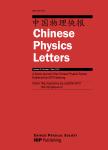版权所有:内蒙古大学图书馆 技术提供:维普资讯• 智图
内蒙古自治区呼和浩特市赛罕区大学西街235号 邮编: 010021

作者机构:College of ScienceGuizhou University Geneva ObservatoryUniversity of Geneva Key Laboratory for the Structure and Evolution of Celestial ObjectsChinese Academy of Sciences
出 版 物:《Chinese Physics Letters》 (中国物理快报(英文版))
年 卷 期:2016年第33卷第9期
页 面:136-139页
核心收录:
学科分类:07[理学] 070401[理学-天体物理] 0704[理学-天文学]
基 金:Supported by the National Natural Science Foundation of China under Grant No 11463002 the Open Foundation of Key Laboratory for the Structure and Evolution of Celestial Objects of Chinese Academy of Sciences under Grant No OP201405 the Western Project of State Scholarship Foundation by the China Scholarship Council
主 题:of is on it as The Pulsation Induced by Mass Transfer in Critically Rotating Stars in by
摘 要:The structural characteristics of the critically rotating accretor in binaries are investigated during rapid mass transfer. It is found that the accretor is subjected to periodic pulsation due to accretions and rejections of mass and angular momentum. Tile gainer attempts to attain both hydrostatic and thermal balances. This physical process can cause tile thermal structure of the accreting star to fluctuate with a period of ~ 0.19 y. Stellar wind can be enhanced by a factor of ~1.25 ×10^4 when the accretor approaches break-down velocity. Surface entropy and density decrease with the increase of the stellar radius due to the fact that rapid rotation leads to a reduction in the number density and surface temperature. The rotational energy has the same trend as stellar radius due to stellar expansion. Surface opacity which is extremely sensitive to surface temperature has an opposite trend to stellar radius. Moreover, the rate of nuclear energy must be adjusted due to mass removal or accretion at the stellar surface.